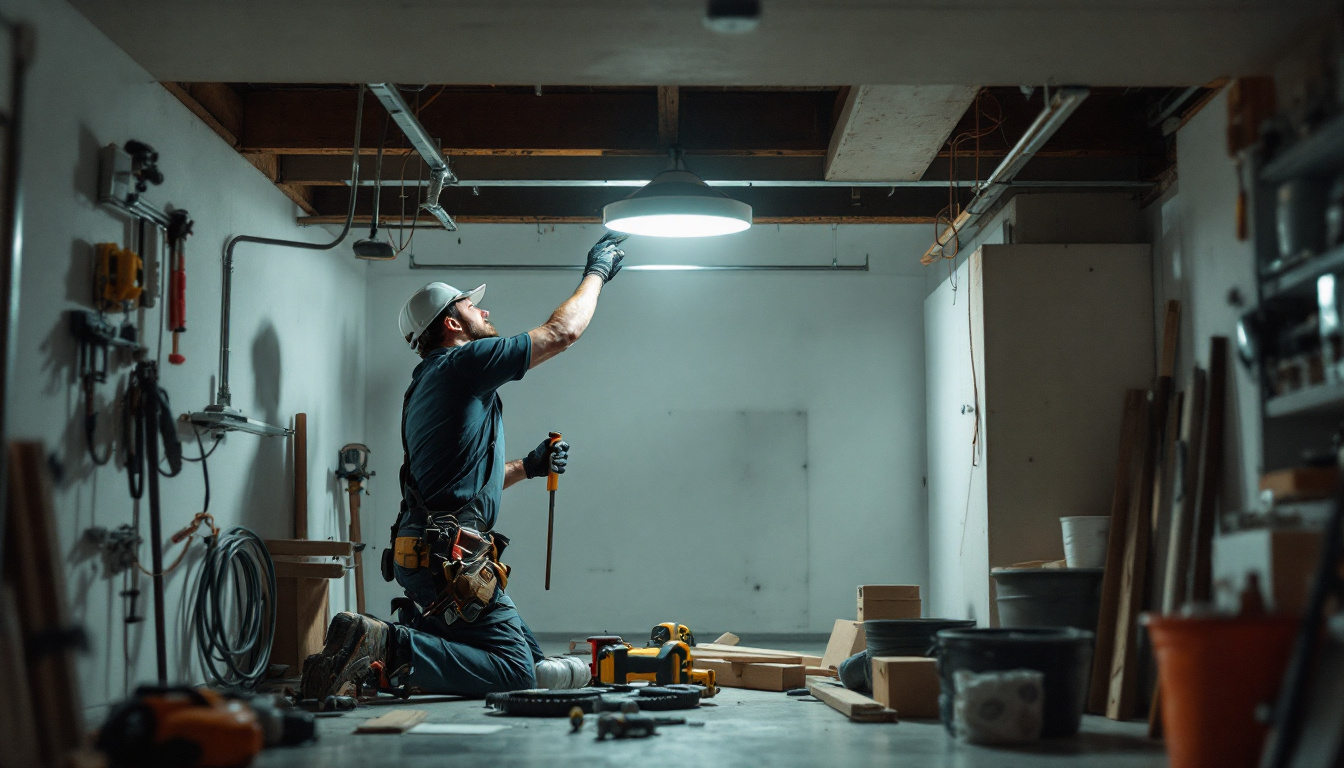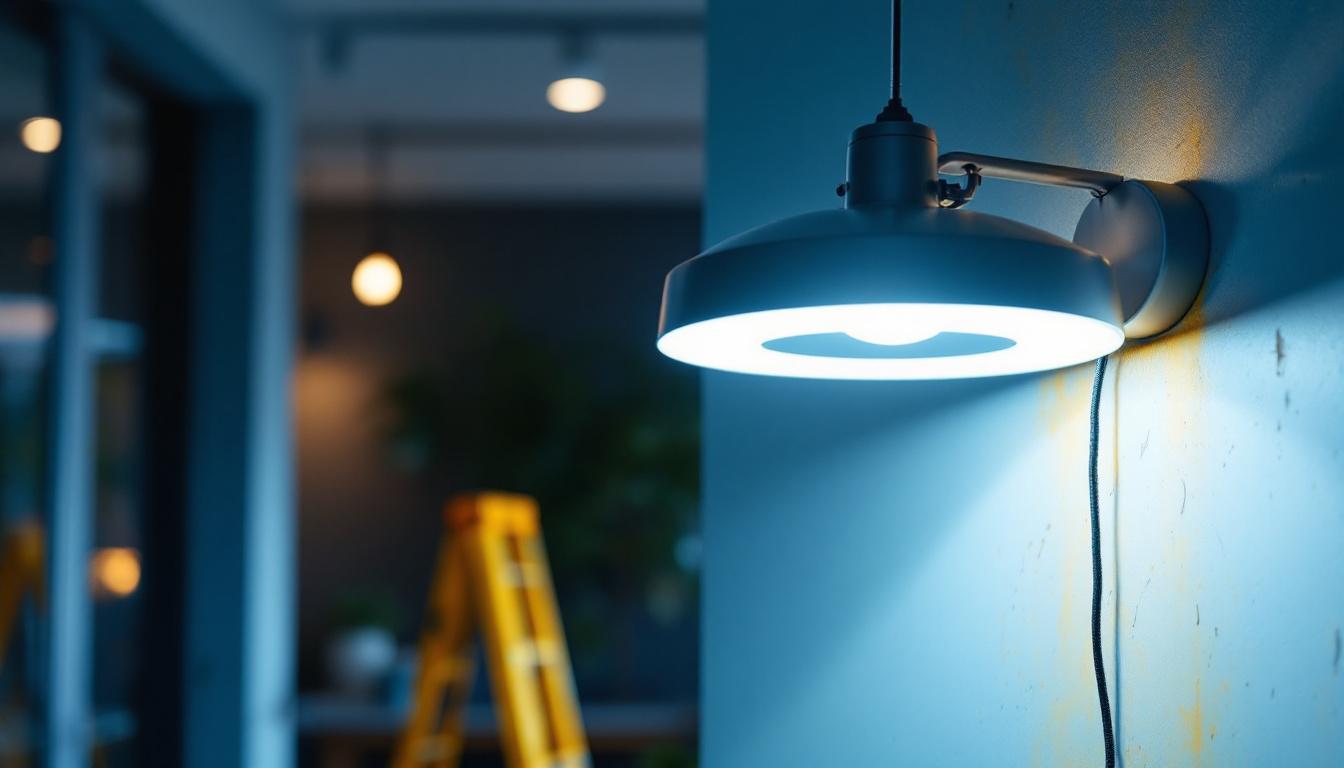
As the demand for well-lit and functional garage spaces continues to rise, lighting contractors are often faced with unique challenges when it comes to installing can lights. These fixtures not only enhance visibility but also contribute to the overall aesthetics of the space. However, the installation process can be fraught with obstacles that require careful consideration and expertise. This article delves into the top challenges lighting contractors face when working with can lights in garages, providing insights and solutions to navigate these complexities.
Garages are not just utilitarian spaces; they often serve multiple functions, from vehicle storage to workshops. This multifaceted use necessitates a tailored approach to lighting design. One of the primary challenges is understanding the specific needs of the garage environment.
Factors such as ceiling height, layout, and the presence of various tools and equipment can significantly influence lighting choices. For instance, a garage that doubles as a workspace may require brighter, more focused lighting compared to a space primarily used for vehicle storage.
Many garages feature varying ceiling heights, which can complicate the installation of can lights. In spaces with high ceilings, contractors must ensure that the light fixtures are positioned to provide adequate illumination without creating dark spots. This often involves calculating the optimal distance between fixtures to achieve uniform lighting.
Additionally, when working with low ceilings, it is crucial to select fixtures that do not protrude excessively, as this can lead to safety hazards and an uncomfortable working environment. The choice of trim and lens can also impact the overall brightness and spread of light, making it essential to consider these factors during the planning phase.
Moreover, the type of light bulbs used can greatly affect the overall ambiance of the garage. LED bulbs, for example, are energy-efficient and have a longer lifespan, making them a popular choice for garage lighting. Their ability to emit bright, clear light can enhance visibility, especially in areas where precision is required, such as workbenches or tool storage zones. Additionally, dimmable options can provide flexibility, allowing homeowners to adjust the lighting based on the task at hand.
The layout of a garage can vary widely, from simple rectangular spaces to more complex designs with multiple alcoves and storage areas. Lighting contractors must assess the layout carefully to determine the best placement for can lights. This often involves creating a lighting plan that takes into account the functional areas within the garage.
For instance, if a section of the garage is dedicated to tool storage, it may require additional lighting to ensure visibility. Conversely, areas used primarily for vehicle parking may not need as much illumination. Striking the right balance between functionality and aesthetics is key to a successful lighting installation.
Furthermore, integrating task lighting into the garage can significantly enhance the usability of the space. Under-shelf lights or wall-mounted fixtures can illuminate work areas without overwhelming the entire garage with brightness. This targeted approach not only improves visibility but also helps create a more organized and efficient workspace. Additionally, incorporating smart lighting solutions can offer convenience and energy savings, as homeowners can control their garage lighting remotely or set schedules to ensure lights are only on when needed.
When installing can lights in garages, electrical considerations play a pivotal role. Ensuring that the existing electrical system can support the new fixtures is essential to avoid potential hazards and ensure optimal performance. The importance of a well-planned electrical layout cannot be overstated, as it directly affects the functionality and safety of the lighting system. Proper planning can lead to improved energy efficiency and a more pleasant working environment, especially in spaces where visibility is crucial.
Contractors must also be mindful of local building codes and regulations, which can vary significantly. Understanding these codes is crucial to ensure compliance and to avoid costly rework or fines. Additionally, it’s beneficial to consult with local electrical inspectors during the planning phase to clarify any specific requirements or recommendations that may pertain to garage lighting installations. This proactive approach not only helps in adhering to regulations but also fosters a smoother inspection process once the installation is complete.
One of the primary electrical challenges is determining the load capacity of the existing circuits. Can lights typically draw a significant amount of power, especially if multiple fixtures are installed. Contractors must calculate the total wattage and ensure that the circuit can handle the load without tripping breakers or causing overheating. This involves not only assessing the wattage of the can lights themselves but also considering any other devices that may be on the same circuit. A thorough analysis can prevent future electrical issues and ensure that the lighting serves its purpose effectively.
In some cases, it may be necessary to install a dedicated circuit for the can lights, particularly in larger garages or those with extensive electrical needs. This not only ensures safety but also allows for greater flexibility in lighting design. A dedicated circuit can enable the use of dimmers or smart lighting controls, enhancing the versatility of the space. Furthermore, considering energy-efficient LED can lights can significantly reduce the overall power consumption, making it an environmentally friendly choice while still providing ample illumination for the garage.
The installation of can lights requires careful wiring to ensure both safety and functionality. This often involves running new wiring through walls and ceilings, which can be particularly challenging in garages that are already filled with tools and equipment. It’s essential to create a clear plan for the wiring layout, ensuring that the installation process is as efficient as possible. Utilizing conduit or raceways can help protect the wiring and maintain a clean aesthetic, especially in a space that may be subject to dust and debris.
Contractors must also navigate potential obstacles such as insulation, plumbing, and ductwork. Using the right installation techniques and tools is essential to avoid damaging existing structures while ensuring that the lighting is both effective and compliant with safety standards. Additionally, it’s advisable to consider the placement of the can lights carefully to maximize light distribution throughout the garage. Strategic positioning can help eliminate dark corners and enhance the overall functionality of the space, making it not only safer but also more enjoyable to work in. Proper sealing and insulation around the fixtures can further improve energy efficiency and reduce the risk of moisture-related issues, especially in garages that may experience temperature fluctuations or humidity.
The selection of can lights is another critical challenge for lighting contractors. With a wide variety of options available, choosing the right fixtures can significantly impact the overall effectiveness of the lighting design.
Factors such as brightness, color temperature, and energy efficiency should all be considered when selecting can lights for a garage. Additionally, contractors must take into account the specific needs of the space and the preferences of the client.
Brightness is a crucial factor in any lighting design, particularly in garages where visibility is paramount. Contractors must assess the lumen output of can lights to ensure that they provide adequate illumination for the intended use of the space.
Color temperature is equally important, as it can affect the overall ambiance of the garage. Warmer tones may create a cozy atmosphere, while cooler tones can enhance visibility and create a more utilitarian feel. Understanding the client’s preferences and the intended use of the space can help guide this decision.
With growing concerns about energy consumption and environmental impact, many clients are seeking energy-efficient lighting solutions. LED can lights have become increasingly popular due to their longevity and lower energy consumption compared to traditional incandescent bulbs.
Contractors should be well-versed in the benefits of different lighting technologies and be prepared to discuss these options with clients. Providing information on energy savings and potential rebates can also enhance the value of the installation.
Safety is a paramount concern when installing can lights in garages. The presence of vehicles, tools, and other equipment can create unique hazards that must be addressed during the installation process.
Contractors must ensure that all installations comply with safety regulations and best practices to minimize risks. This includes proper fixture placement, secure wiring, and adequate protection against moisture and dust.
Garages are often exposed to varying levels of moisture and dust, which can affect the performance and longevity of lighting fixtures. Selecting can lights that are rated for damp or wet locations is essential to ensure durability and safety.
Additionally, using sealed fixtures can help prevent dust accumulation and moisture ingress, further enhancing the lifespan of the lighting installation. Contractors should educate clients on the importance of choosing appropriate fixtures for the garage environment.
Proper fixture placement is crucial for safety and functionality. Can lights should be installed at a height that minimizes the risk of accidental contact while providing adequate illumination for the space.
Contractors must also consider the potential for glare and shadows, which can create hazards in a busy garage environment. Thoughtful placement can help mitigate these issues, ensuring that the space is both safe and well-lit.
Effective communication with clients is essential throughout the lighting installation process. Setting clear expectations can help mitigate misunderstandings and ensure a smooth project flow.
Contractors should take the time to discuss the client’s vision for the garage, including specific lighting needs and aesthetic preferences. This collaborative approach can lead to a more successful outcome and greater client satisfaction.
Every client has unique needs and preferences when it comes to garage lighting. Taking the time to understand these requirements can help contractors tailor their approach and provide the best possible solutions.
Whether the client is looking for bright, functional lighting for a workshop or softer lighting for a multi-purpose space, understanding their vision is key to a successful installation. Contractors should ask open-ended questions and encourage clients to share their ideas and concerns.
Setting realistic expectations regarding timelines, costs, and potential challenges is crucial for maintaining a positive client relationship. Contractors should provide detailed estimates and timelines, outlining the scope of work and any potential obstacles that may arise during the installation process.
By being transparent and proactive in communication, contractors can foster trust and confidence, ultimately leading to a more successful project outcome.
Installing can lights in garages presents a unique set of challenges for lighting contractors. From understanding the specific needs of the garage environment to navigating electrical considerations and ensuring safety, each project requires careful planning and execution.
By addressing these challenges head-on and maintaining open communication with clients, contractors can create effective and aesthetically pleasing lighting solutions that meet the diverse needs of garage spaces. As the demand for functional and well-lit garages continues to grow, the expertise of lighting contractors will be essential in delivering high-quality installations that enhance both safety and usability.
Ready to overcome the challenges of garage lighting installations and exceed your clients’ expectations? Choose LumenWholesale for your lighting needs and gain a trusted partner in your success. Our spec-grade lighting products are designed to meet the highest industry standards, ensuring that every garage is well-lit, functional, and safe. With unbeatable wholesale prices and the convenience of free shipping on bulk orders, you can equip your projects with premium lighting without breaking the bank. Discover the best value in wholesale lighting and make LumenWholesale your go-to source for all your lighting contractor needs.

Discover essential insights into 48-inch LED light fixtures that every lighting contractor needs to know.

Discover the history and evolution of LED technology in this comprehensive guide tailored for lighting contractors.

Discover the essentials of home lighting automation compliance in this informative guide tailored for lighting contractors.

Discover the transformative power of modern canned lights through real-world success stories from lighting contractors.